#"perutours
Text
TOUR CAMINO INCA GRUPAL A MACHU PICCHU DE 1 DIA Ó 2 DIAS. CUSCO-PERU
Si desea visitar Machu Picchu de una manera diferente, puede unirse a nuestros grupos ya confirmados. Si las fechas confirmadas que ya tenemos no coinciden con la fecha en la que desea viajar, solo díganos la fecha en la que desea realizar la caminata a Machu Picchu, con usted podemos abrir una nueva fecha para el Camino Inca compartido de 1 ó 2 días.
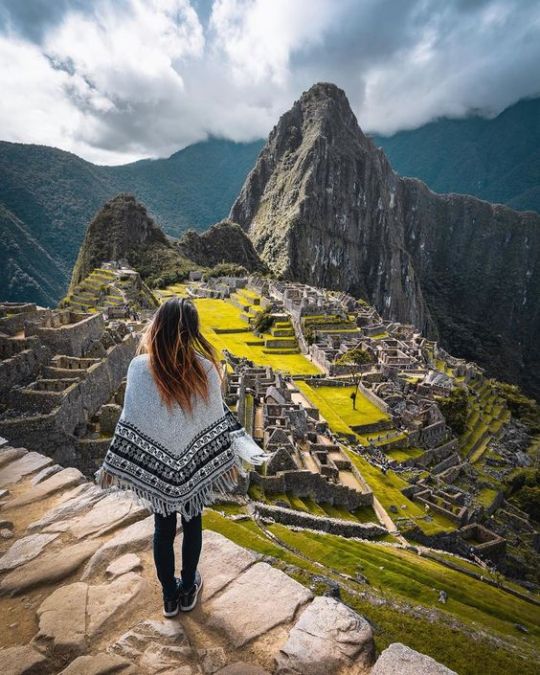

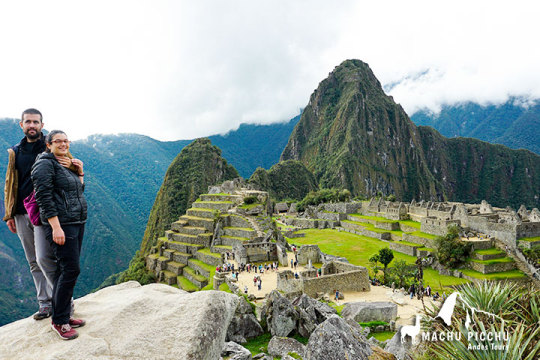


La caminata tiene una distancia de 10,5 km y una duración de 6 horas a paso moderado.
El recorrido es inolvidable con abundancia de flora y fauna, construcciones incas admirables y belleza paisajística asombrosa. - Muy recomendado para familias y personas que no practican mucho la caminata. No dude en consultar la disponibilidad del Camino Inca de 1 ó 2 días y los precios.
- WhatsApp / Telegram: (+51) 984032083 / 984032063 Somos el operador oficial del Camino Inca a Machu Picchu.
Email: [email protected]
#caminoincaamachupicchu#caminoinca2dias#caminataamachupicchu#incatrail#incatrailtrek#incatrailperu#caminoinca1dia#incatrailbooking#tourcaminoinca#machupicchuhiking#hikingmachupicchu#trektomachupicchu#machupichutrek#shortincatrail#incatrailtickets#incatrailofficialoperators#tourtomachupicchu#andestrekking#toursperu#perutours#travel#culture#archaeology
3 notes
·
View notes
Video
, ́ por cusco destination
Por Flickr:
📲 ́ : : bit.ly/infcusco wa.link/p2aizv ☎ - 084 650500 📧 [email protected] 🌐 bit.ly/CuscoDestination SOMOS "CUSCO DESTINATION Travel agency" Operadora de Viajes En Cusco .
#CUSCO#PERU#MACHUPICCHU#CUSCODESTINATION#cuscotravel#cuscotours#CUSCOPERU#PERUTOURS#PERUTRAVEL#flickr
1 note
·
View note
Text
The Salkantay Trek to Machu Picchu
The Salkantay Trail is one of the main attractions for trekking and nature lovers.
This long path leads to the majestic citadel of Machu Picchu and reserves magical experiences from start to finish!
Hiking the Salkantay Trail allows each traveler to connect even more with themselves,
because each challenge needs to be overcome calmly, after all, the path reaches an altitude of 4,600 meters.
What's more, you'll learn even more about the following attractions you'll be visiting:
🌅 Humantay Lake
🏔️ Salkantay Mountain
🚿 Cocalmayo Hot Springs
🌳 Machu Picchu Village
🌄 Machu Picchu Citadel
#salkantay#MachuPicchuSalkantay#machupicchuperu#perutours#tour#adventure#andeanadventure#travel#picoftheday#salcantaytrek#salkantay2023#tripadvisor2023#visitperu#travelblogger#southamerica#travelphotography#igersadventure
#salkantay#MachuPicchuSalkantay#machupicchuperu#perutours#tour#adventure#andeanadventure#travel#picoftheday#salcantaytrek#salkantay2023#tripadvisor2023#visitperu#travelblogger#southamerica#travelphotography#igersadventure
0 notes
Text
Peru

Peru is a country that is rich in history, culture, and natural beauty. It is located in South America and is bordered by Ecuador, Colombia, Brazil, Bolivia, Chile, and the Pacific Ocean. The country's name has a fascinating origin, tracing back to a powerful ruler named Biru who controlled the region in the early 1400s.
Peru has a long and complex history that dates back millennia. It is home to several ancient civilizations, including the Inca Empire, which thrived from the 13th to the 16th centuries. The country has also been shaped by Spanish colonization, which began in the 16th century and lasted for almost 300 years.
Peru has a diverse landscape, ranging from the high peaks of the Andes Mountains to the coastal deserts and the Amazon Rainforest. The geography of Peru is characterized by diverse regions such as the highland plateau, coastal deserts, and Amazon rainforest. The country has numerous geological wonders such as the Colca Canyon, Huayna Picchu, and the Marcahuasi Stone Forest.
Peru is home to over 21,00 species of plants and animals, many of which are unique to the country. Biodiversity is a critical area of focus for the country, and several initiatives have been put in place to preserve the natural habitats of these creatures.
Peru's economy has been growing rapidly in recent years, driven by mining, fishing, agriculture, and manufacturing. The country has made significant investments in infrastructure development, including transportation, communication, and utilities. Peru is also known for its scientific community and has made significant strides in areas such as biotechnology and renewable energy.
Peru is a country with a rich cultural heritage that has been shaped by a blend of indigenous and Spanish influences. The country's culture is reflected in its vibrant traditions, such as music, dance, and art. Visitors to Peru can enjoy a variety of activities such as attending festivals, exploring scenic cities, visiting historic landmarks, or sampling the local cuisine.
Peru is a must-visit destination for anyone looking to immerse themselves in a land rich in history, culture, and natural beauty. Whether you are interested in learning about ancient civilizations, experiencing vibrant traditions, or exploring diverse landscapes, Peru has something for everyone.

Etymology
Peru is a country with a rich history and culture, and the origin of its name is no exception. The name "Peru" is said to have come from the Quechua word "Biru," which means "land of abundance." This name was first used by the indigenous people of the region to describe the fertile valleys and abundance of natural resources.
When Spanish conquistadors arrived in the 16th century, they began referring to the region as "Peru," which eventually became the official name of the country. The origin of the word "Peru" in Spanish is uncertain, but there are a few theories. One theory suggests it may have come from the Spanish word "perro," meaning dog, which was used to describe the furry llama-like animals indigenous to the region. Others believe it may have originated from the name of a local ruler or the ancient city of Birú.
Regardless of its origin, the name "Peru" has become synonymous with the diverse and vibrant culture of the country. From the towering Andes Mountains to the lush Amazon rainforest, Peru truly is a land of abundance, and its name reflects the natural beauty and resources found throughout the country.
Aside from the name, the country is also known for its rich history, which we will explore in the following section.
History
Peru's rich history spans several millennia, from ancient civilizations to modern-day politics. The earliest known inhabitants of Peru were indigenous peoples who lived there thousands of years before the arrival of the Inca Empire. The Inca civilization, which ruled the region from the 13th to the 16th century, was known for its advanced agricultural practices, elaborate road networks, and impressive architectural feats such as Machu Picchu.
When Spanish conquistadors arrived in the 16th century, they brought with them new diseases and a thirst for gold. The fall of the Inca Empire was swift, and the Spanish established a new colonial government in Peru. Over the next several centuries, Peru was ruled by the Spanish Crown, first as part of the Viceroyalty of Peru and later as part of the Viceroyalty of New Granada.
In the early 19th century, Peru, like many other South American countries, gained its independence from Spain. The following years were marked by political upheaval, including a period of dictatorship and several border disputes with neighboring countries. In the 20th century, Peru experienced periods of political instability, including military coups and a brutal internal conflict with the Shining Path Communist guerrilla group.
Today, Peru is a representative democratic republic with a president, a congress, and a judicial branch. The country's current political climate is relatively stable, although corruption remains a concern. Peruvians continue to celebrate their rich cultural heritage while also striving to modernize their economy and society.
- Important events in Peru's history:
- 1200 BCE: First known settled communities appear in northern Peru.
- 13th-16th century: Inca Empire dominates the Andean region.
- 1532: Spanish conqueror Francisco Pizarro arrives in Peru, leading to the downfall of the Inca Empire.
- 1821: Peru declares its independence from Spain.
- 1968: Military coup led by Juan Velasco Alvarado results in socialist reforms and nationalization of industries.
- 1980-2000: Internal conflict with the Shining Path guerrilla group results in tens of thousands of deaths.
- 1990s: Alberto Fujimori becomes president and initiates market-oriented reforms.
- 2000s-present: Several democratically elected presidents have worked towards economic growth and social development.
Peru's rich history can be experienced firsthand by visiting its many archaeological sites, including those of the Inca Empire and the oldest known civilization in the Americas, the Norte Chico civilization. The country's museums and cultural events provide insights into its diverse cultural traditions and artistic heritage.
Geology
Geology plays a significant role in shaping Peru's diverse landscapes. This South American country is gifted with a wealth of geological wonders that are worth exploring. From snow-capped mountains to deep canyons, Peru boasts a varied terrain that is a testament to its rich geological history.
Peru is situated in the central-western region of South America, and its geology is primarily characterized by the Andean mountain range that runs parallel to the coast. The mountains are one of the most prominent geographical features of Peru, forming an impressive backbone that spans the country's entire length. The Andean range is made up of many mountain ranges, each with a different geological composition.
The Andes are believed to have formed around 300 million years ago, as a result of the collision of the South American and Pacific tectonic plates. This collision resulted in the uplift of the Andes, forming the towering mountain range that we see today. The Andes are also home to several active, dormant, and extinct volcanoes, making it an area rich in geological diversity.
One of Peru's most famous geological landmarks is the Colca Canyon, located in the southern part of the country. This canyon is reputed to be one of the world's deepest canyons, measuring over 3,270 meters at some places. The canyon was formed by the Colca River cutting through the Andes, carving out the deep ravine over millions of years.
Peru is also home to many unique geological formations that have been shaped by wind, water, and other natural forces. The Marcahuasi stone forest is one such place, located in the Andean highlands near Lima. The area is filled with huge rocks that have been weathered into different shapes over time, forming a surreal landscape that is a photographer's dream.
Peru's geology is an integral part of its beauty and diversity. Exploring the country's geological wonders is a fantastic way to experience the region's unique landscapes and natural marvels. Whether it's hiking through the Andean mountain ranges, exploring the canyons and valleys, or marveling at the stone formations, Peru's geology offers something for everyone. So, pack your bags and get out and explore the geological wonders of this beautiful country!
Geography
Peru's geography is as diverse as it is unique, with a range of landscapes that include mountain ranges, deserts, rainforests, and coastal plains. In fact, Peru is one of the most geographically diverse countries in the world.
The Andes mountain range dominates much of Peru's geography, with peaks that reach over 20,000 feet. The Cordillera Blanca is a popular destination for adventure seekers, with trekking and climbing opportunities that offer stunning views.
The coastal plains are another fascinating aspect of Peru's geography. This region is home to some of Peru's largest cities, including the capital, Lima. The region is arid and quite different from the lush rainforests and mountains that dot other parts of the country.
Peru's deserts are also unique, with sand dunes that stretch for miles. The Nazca Lines, a series of ancient geoglyphs that can be seen from the air, are a popular attraction in this region.
Moving into the jungle regions of Peru, visitors will find dense rainforests that are home to an incredible array of flora and fauna. The Amazon Rainforest covers a significant portion of Peru, and visitors can trek through the jungle, spot elusive wildlife, and learn about indigenous communities that have lived in the area for centuries.
In terms of regions, Peru can be divided into three distinct areas: the coast, Andes, and jungle. Each region has its own unique climate and ecology. The coast is mostly desert, with a dry and warm climate all year round. The Andes are characterized by cooler weather, with a range of microclimates depending on the altitude. The jungle region is hot and humid, with a wet season that lasts from November to April.
Visitors to Peru can experience a wide range of activities and sights thanks to its diverse geography. Hike the Andes, explore the deserts, trek through the jungle, or simply relax on one of the country's many beaches. Whatever your interests, there's sure to be something for you in this beautiful country.
Ecology
Preserving Peru's Unique Biodiversity is an important aspect of the country's cultural heritage. With one of the highest levels of biodiversity in the world, Peru is home to a variety of ecosystems, from dense Amazon jungles to the Andean highlands, coastal deserts, wetlands, and more. Peru is also one of the world's top ten countries for biological diversity.
The country's ecological riches are due to its location and topography, as well as its diverse climatic conditions. Such ecological significance has led to the creation of more than twenty protected areas, including National Parks, reserves, and wildlife sanctuaries. These protected areas, along with other initiatives, are a testament to Peru's commitment to preserving its natural wonders and unique biodiversity.
One of the most well-known regions for biodiversity in Peru is the Amazon jungle, which spans more than sixty percent of the country's territory. The Amazon is home to thousands of species of plants, animals, and insects, many of which are not found anywhere else in the world. Some of the most iconic animals include jaguars, pumas, giant river otters, and howler monkeys.
Another region teeming with biodiversity is the Andes mountain range, which stretches vertically along Peru's western coast. Here, you can find high-altitude wetlands or "páramos," which are home to unique plants such as the Puya raimondii, the world's largest bromeliad. The Andes is also home to the resplendent quetzal, a bird with colorful, iridescent plumage which is sacred to many of Peru's indigenous communities.
However, despite the efforts to protect the country's biodiversity, there are still several threats to the delicate ecological balance in Peru. These threats include deforestation, illegal wildlife trafficking, mining, and pollution. Deforestation in the Amazon jungle, for example, has become a significant problem as farmers clear land to grow crops or cattle grazing. Illegal wildlife trafficking is another issue, with exotic animals being captured for the pet trade or for use in traditional medicine.
In response, the government and various non-governmental organizations (NGOs) are carrying out multiple campaigns to address these threats and ensure the sustainable use of natural resources. Some of the initiatives include reforestation, sustainable agriculture, and eco-tourism.
Tourism also plays an essential role in promoting ecological awareness and preservation. Peru offers various eco-tourism destinations that give visitors a chance to explore the country's natural beauty while promoting sustainable travel practices. many communities possess invaluable knowledge of plants, animals, and local resources that could offer a sustainable and eco-friendly, income source for residents in a given area.
Preserving Peru's Unique Biodiversity is key not only to protect the country's natural heritage but to promote the sustainable use of resources. It is therefore crucial to work together to ensure the preservation of Peru's fragile ecosystems, safeguarding its biodiversity for future generations.
Biodiversity
Peru is known for its rich biodiversity, with a vast array of flora and fauna that inhabit its diverse landscapes. The country's location along the Andes mountains and its proximity to the Amazon Rainforest result in a unique mix of ecosystems that support a wide variety of species.
Peru is home to approximately 25,000 plant species, of which more than 5,000 are endemic. These include the impressive Machu Picchu orchid, the Peruvian apple cactus, and the dazzling polylepis forests. The Amazonian rainforest, which makes up more than 60% of Peru's territory, is one of the most biodiverse regions in the world, with hundreds of species of plants, birds, and mammals.
Peru is also home to over 500 species of mammals, including the majestic Andean condor, which has a wingspan of up to 3 meters, the endangered spectacled bear, and the playful river otter. more than 1,800 species of birds can be found in Peru, making it a top destination for birdwatchers. The country also boasts over 300 species of reptiles and amphibians, many of which are endemic.
Peru's coastal waters are great for whale watching and marine animal spotting. Different species of dolphins such as the bottlenose, the common and the pink river dolphin can be admired in their natural habitat. One particular species that never ceases to amaze tourists is the amazing Hummingbird, one of the best-known birds in the world due to the beauty of its jewel-like colors, its spectacular flight and for the fact that their wings move in the pattern of a figure-8, allowing them to hover in mid-air and fly backwards.
Unfortunately, Peru's natural habitats face many challenges, including deforestation, habitat loss, and climate change. However, there are numerous organizations and initiatives working towards preserving Peru's rich biodiversity. The government of Peru has taken great initiatives such as declaring protected natural reserves, promoting responsible tourism, investing in scientific research and implementing innovative solutions for sustainable development. By supporting responsible tourism and conservation efforts, travelers can help to protect Peru's unique natural heritage for generations to come.
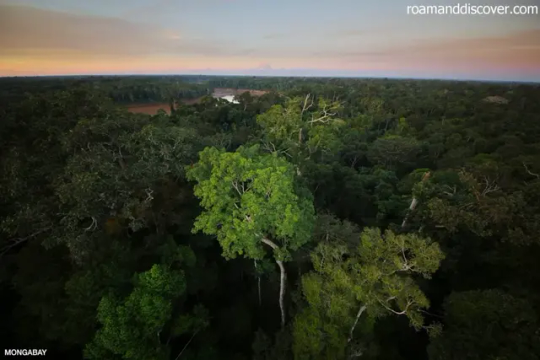
Amazon Rainforest
Climate
Peru's climate is largely influenced by its geography and location. The country is divided into three distinct climate zones: coastal, Andean, and Amazonian.
The coastal zone has a subtropical desert climate, with little to no rainfall and average temperatures ranging from 15 to 25°C (59 to 77°F) throughout the year. The region is often covered in a fog called the garúa, which is formed by the cold Humboldt Current.
In the Andean zone, the climate is characterized by high altitude, with colder temperatures and low humidity. The region has two distinct seasons: the dry season from May to October and the rainy season from November to April. Temperatures can range from below freezing in the highest peaks to 15°C (59°F) in the lower valleys.
The Amazonian zone has a tropical rainforest climate, with high temperatures and abundant rainfall throughout the year. The region has no distinct seasons, but there are periods of higher and lower rainfall. The average temperature in the region is around 26°C (79°F), with humidity often reaching 80%.
In addition to the three climate zones, Peru also experiences various weather patterns throughout the year. The coastal region, for example, often experiences temperatures in the high 30s°C (high 90s°F) during the summer months, while the Andean region can see snow and freezing temperatures during the winter months.
It is important to keep the climate and weather patterns in mind when planning a trip to Peru. The best time to visit the country can vary depending on your destination and activities. For example, the Andean region is best visited during the dry season for hiking and outdoor activities, while the Amazonian region is often best visited during the wet season for birdwatching and flora viewing.
Peru's diverse climate and weather patterns offer a unique experience for visitors. From coastal deserts to Andean mountains and Amazonian rainforests, there is no shortage of breathtaking landscapes to explore.
Environmental Issues
Peru faces multiple environmental challenges that threaten its unique biodiversity and natural resources. Deforestation, pollution, and mining activities are among the biggest concerns that affect both the environment and the livelihoods of local communities.
The Peruvian government has implemented several initiatives to address these issues and promote sustainable development. One of the most notable is the National Environmental Certification System, which seeks to regulate and control the environmental impact of industrial activities.
Peru is committed to reducing greenhouse gas emissions and preserving its forests through the REDD+ program, which provides incentives for forest conservation and restoration projects.
On a local level, grassroots organizations and indigenous communities are actively involved in the protection and conservation of their natural resources. For example, the Ashaninka people in the central Amazon have set up a network of conservation areas to safeguard their ancestral lands and preserve the biodiversity of the region.
However, there are still many challenges to overcome.
Read the full article
0 notes
Photo
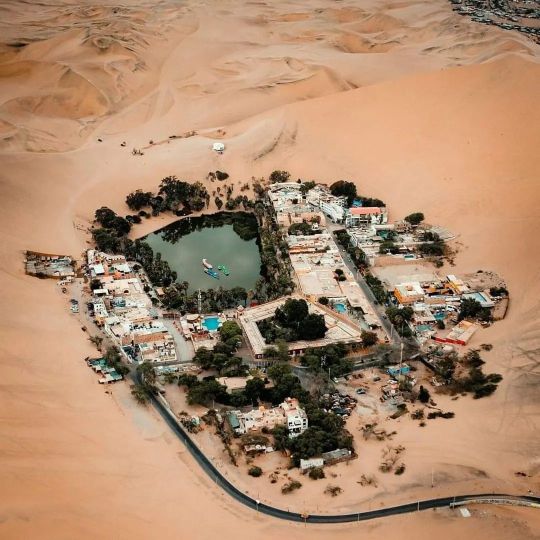
Huacachina significa 'mujer que llora' en quechua. Cuenta la leyenda que esta laguna nace de las lágrimas de una hermosa mujer de ojos verdes, que lloraba la muerte de su amado. Visita Paracas, la Huacachina + deportes de Aventura. ✅Nuestros tours 👇👇 www.kymachupicchuviajes.com ✅WhatsApp +51 994683200 +51 914437426 ✅Nuestros comentarios 🧐🧐👇👇 https://www.tripadvisor.com.pe/Attraction_Review-g294314-d23860292-Reviews-K_Y_Machupicchu_Viajes-Cusco_Cusco_Region.html #visitaperu #visitacusco #visitamachupicchu #perutours #cuscotours #peru #cusco #machupicchuviaje #machupiccchuviajes #machupicchutours #viajerosperu #viajerosamachupicchu #vallesagradodelosincas #montaña7colores #lagunahumantay #puno #mexico #argentina #brasil #chile #colombia #ecuador #uruguay #paraguay #venezuela #bolivia #southamerica #estadosunidos #usa https://www.instagram.com/p/CpB3K1hu9vJ/?igshid=NGJjMDIxMWI=
#visitaperu#visitacusco#visitamachupicchu#perutours#cuscotours#peru#cusco#machupicchuviaje#machupiccchuviajes#machupicchutours#viajerosperu#viajerosamachupicchu#vallesagradodelosincas#montaña7colores#lagunahumantay#puno#mexico#argentina#brasil#chile#colombia#ecuador#uruguay#paraguay#venezuela#bolivia#southamerica#estadosunidos#usa
0 notes
Photo





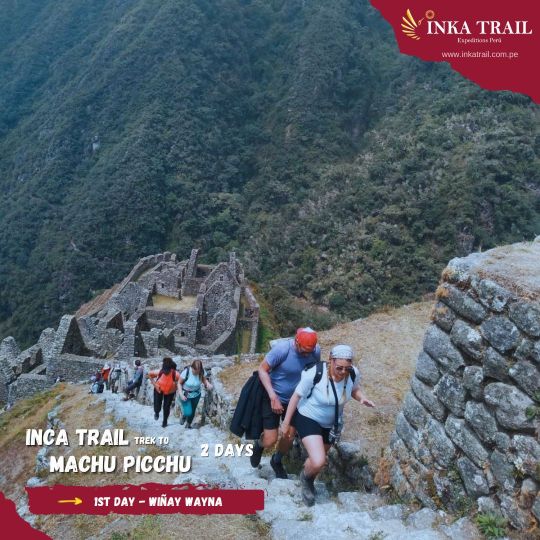
Short Inca Trail to Machu Picchu in 2 days
https://wa.me/51960483988
https://www.inkatrail.com.pe/tours/inca-trail-machu-picchu-in-2-days/
[email protected]
+51 960 483 988
#machupicchu#Incatrail#shortincatrail#incatrail4D#incatrail2022#Trekking#travelperu#perutours#cuscotour#cuscoperu
0 notes
Text
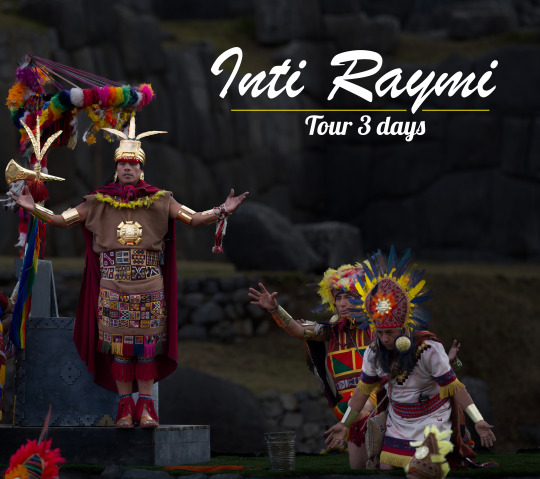
Machu Picchu and Inti Raymi
3 Days / 2 Night
Included Machu Picchu and the festival of the Sun "Inti Raymi" Date: for visitors Cusco at the June 23 or 24 (Itinerary vary according to the date of arrival of guests "while visiting one of the attractions offered)
Contact us:
+51 922 503 041
[email protected]
WhatsApp: https://bit.ly/3RvzXyN
#travel#machupicchu#treeking#peru#love#photooftheday#photography#nature#instagood#travelgram#travelphotography#cusco#kamp#camp#peruvian#perutour#inkatrailtour#inkatrail#sunset#IntiRaymi#holiday#explore
2 notes
·
View notes
Photo

Discover 23 of the top things to do in Peru.
Calling all adventure seekers. Brace yourself for an incredible lineup of 23 must-do activities in Peru. From exploring ancient ruins to immersing yourself in vibrant cultures, this is the ultimate Peruvian escapade.
0 notes
Photo

INMENSAMENTE FELIZ de compartir con ustedes este noticiooon 🔥 Estaremos realizando una gira de medios y shows junto a @daumasmusic. Mi gente de Perú atentos que vamos a estar anunciando fechas y lugares pronto ✨ GRACIAS A DIOS seguimos trabajando los sueños 💙😍 #perutour #perutour2022 #showsenvivo #girademedios #girapromocional #AmirLane #uncannymusic #reggaeton #2022 #perú #artistasargentinos (en Lima, Peru) https://www.instagram.com/p/CgYX88EuFch/?igshid=NGJjMDIxMWI=
#perutour#perutour2022#showsenvivo#girademedios#girapromocional#amirlane#uncannymusic#reggaeton#2022#perú#artistasargentinos
0 notes
Text
TOUR A MACHU PICCHU EN EL TREN DE LUJO
Nuestros Tours de Lujo a Machu Picchu de 1 día, son diseñados pensando siempre en usted, para ofrecerle los mejores Paquetes exclusivos a Machu Picchu.
Déjese llevar por el encanto de la Ciudad Perdida de los Incas.Desde el exclusivo observatorio o vagón al aire libre, sorpréndase con la belleza del paisaje, mientras disfruta de la comida peruana y los cócteles, también disfrute de la música en vivo que toca los clásicos populares.

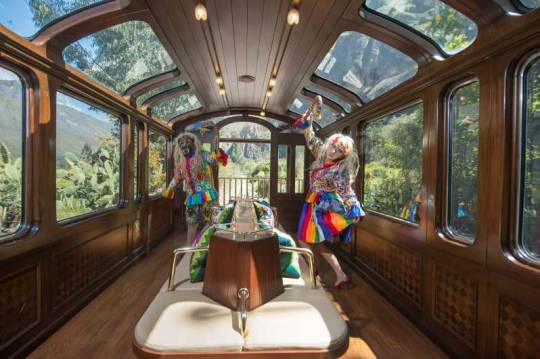
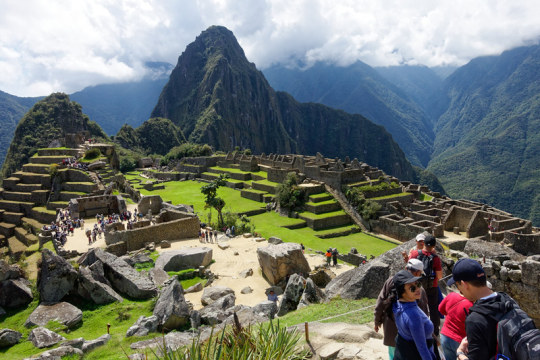

INCLUYE:
Minivan privada desde su Hotel en Cusco - Estación de Tren - Hotel Cusco.
Guía profesional de nivel superior.
Boleto para acceder a la Ciudad Inca de Machu Picchu (el primer día).
Tickets de tren de Lujo de Ida y Vuelta.
Boletos de bus entre Aguas Calientes - Machu Picchu - Aguas Calientes.
Almuerzo (primer día) y cena (segundo día) gourmet, cócteles y música en vivo a bordo del Lujoso Tren.
Almuerzo buffet en el restaurante de 5 tenedores ubicado en la puerta principal de la Ciudad Inca de Machu Picchu (segundo día).
Todo el recorrido estará en Servicio Privado
hthttps://bit.ly/36Rd2qN
Para más información escribanos a:
correo electrónico: [email protected] WhatsApp: (+51) 978107349
1 note
·
View note
Text
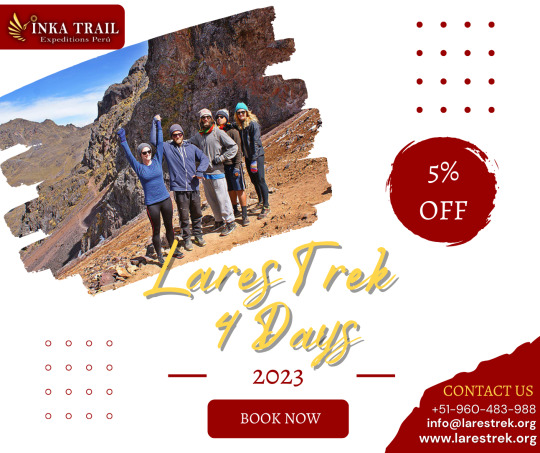
Lares Trek availability to Machu Picchu 4 days 2023
contact us for more information. [email protected]
ó Whatsapp message: +51-960-483-988
wa.me/51960483988
www.larestrek.org
#travel#traveling#hike#hikking#trekking#trek#walkingchallenge#Cusco#tour#adventure#expeditions#explore#culturalheritage#tourism#travelling#perutours#Lares
0 notes
Photo

Short Inka Trail to Machu Picchu - 2D/1N - Availability 2023
Book now and secure your permits for the Inca Trail!
The trek starts at Km 104 (104 kilometers along the railway from Cusco) and involves a four hour walk uphill to Wiñay Wayna and a couple of hours further to Machu Picchu making it ideal for trekkers wanting to experience at least a part of the Inca Trail but haven't got the time (or energy) to complete the full 4 day trek.
This itinerary is rated moderate and should only be undertaken by people who are fairly fit and take regular exercise. The trek starts at 2100m (KM 104) and climbs to 2700m (Wiñay Wayna) before descending to 2400m (Machu Picchu). Since the trek is carried out at a much lower altitude than the Short 2 day Inca Trail trek you do not need to worry about acclimatization as much, although many people still find themselves short of breath when arriving at Wiñay Wayna so this trek should certainly not be considered an easy option.
More info:
[email protected]
WhatsApp: https://wa.me/51984621294
317 San Agustín Street, Cusco
#inkatrail#MachuPicchu#2023#newyear#cusco#trek#trekiking#walking#Adventure#travel#travelling#hiking#biking#camping#travelagent#culture#peru#perutours#Tourism#tour#explore#expedition#mountain#hike
0 notes
Text
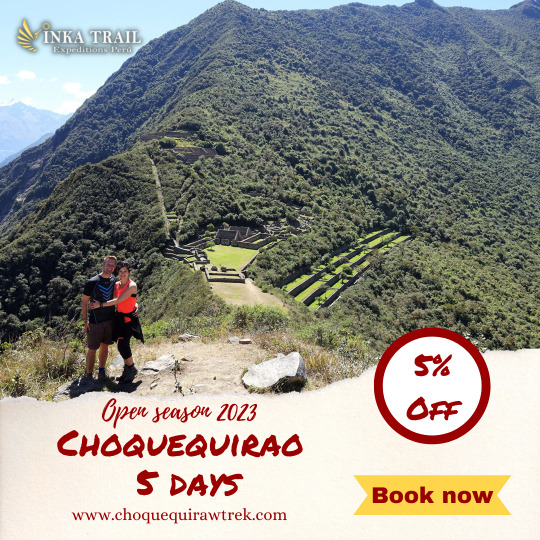
Choquequirao Trek in 5 days available 2023
contact us for more information
ó Whatsapp message:
+51 960 483 988
#travel#traveling#hike#hikking#trek#trekking
#viajes#walking#Cusco#tour#adventure#Expedición#explore#cultura#tourism#travellingchallenge#perutours#Choquequirao#ChoquequiraoTrek
0 notes
Photo

🔴 MACHUPICCHU ABRE SUS PUERTAS DESDE HOY 12 DE FEBBRERO 2023☝️ Visita Machupicchu en un día... ✅Nuestros tours 👇👇 www.kymachupicchuviajes.com ✅WhatsApp +51 994683200 +51 914437426 ✅Nuestros comentarios 🧐🧐👇👇 https://www.tripadvisor.com.pe/Attraction_Review-g294314-d23860292-Reviews-K_Y_Machupicchu_Viajes-Cusco_Cusco_Region.html #visitaperu #visitacusco #visitamachupicchu #perutours #cuscotours #peru #cusco #machupicchuviaje #machupiccchuviajes #machupicchutours #viajerosperu #viajerosamachupicchu #vallesagradodelosincas #montaña7colores #lagunahumantay #puno #mexico #argentina #brasil #chile #colombia #ecuador #uruguay #paraguay #venezuela #bolivia #southamerica #estadosunidos #usa https://www.instagram.com/p/CokPrGBLA6I/?igshid=NGJjMDIxMWI=
#visitaperu#visitacusco#visitamachupicchu#perutours#cuscotours#peru#cusco#machupicchuviaje#machupiccchuviajes#machupicchutours#viajerosperu#viajerosamachupicchu#vallesagradodelosincas#montaña7colores#lagunahumantay#puno#mexico#argentina#brasil#chile#colombia#ecuador#uruguay#paraguay#venezuela#bolivia#southamerica#estadosunidos#usa
0 notes
Photo

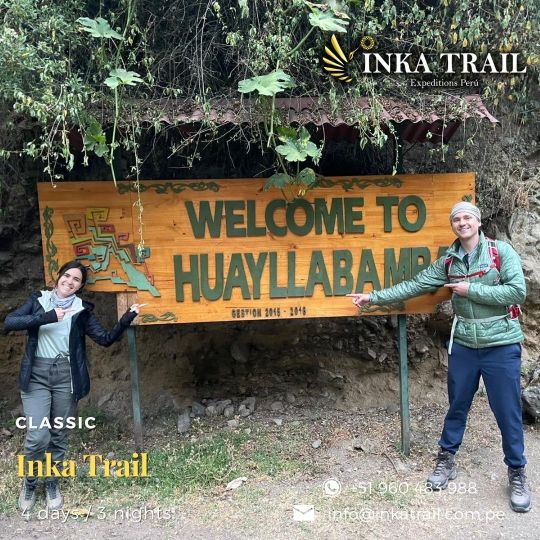



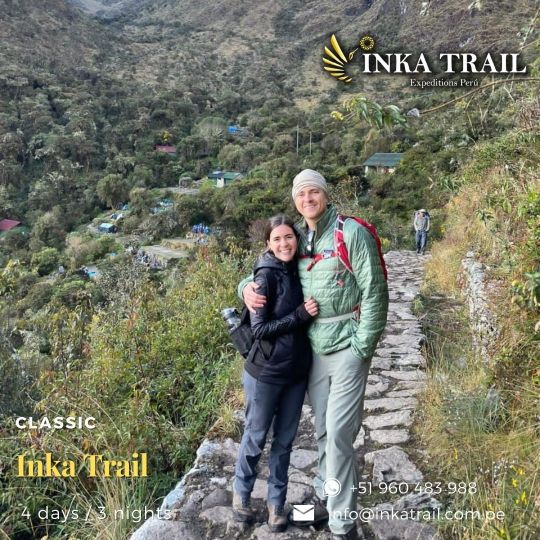
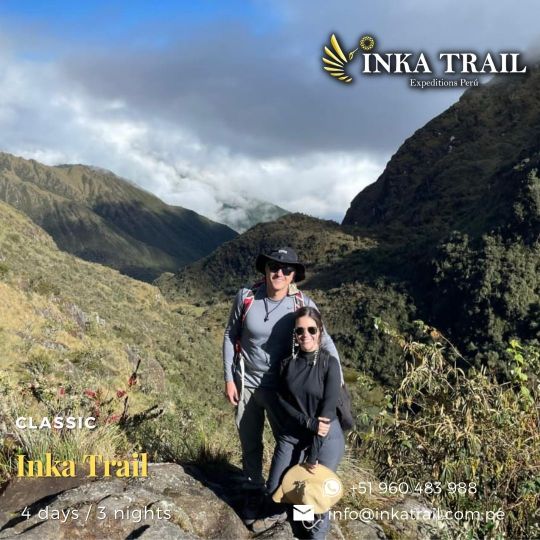

Classic Inca Trail to Machu Picchu in 4 Days
Price: USD 579.00 per person
This famous andean trek will take you from Sacred Valley to the Sanctuary of incas which is one of the Seven Wonders of the World and different archaeological Inka sites.
The Inca Trails is called in Quechua “the Inka Language” Qhapaq Ñan - refers to the network of trails) were without a doubt is one of the marvels of Tahuantinsuyo, according to the Peruvian historian, José Antonio del Busto, who explains that the Inca “King” Huayna Capac most increased the network of trails in order to quickly mobilize his army.
The trails varied in quality and size, they could be 6 to 8 meters wide on the coast but, in the mountains the paving was only one meter wide but the path was audaciously steep and climbed over the difficult Andean mountains.
More info:
+51 960 483 988
https://wa.me/51960483988
https://www.inkatrail.com.pe/.../the-royal-inka-trail-4.../
#hike#hiking#adventure#trek#treking#tours#travel#peru#machupichu#tourism#traveling#explore#perutours#cusco#inca#incatrail#traveldeals
1 note
·
View note

